By Amanda Rose Newton
If you’re looking to add vertical charm, lush privacy, or a touch of wild beauty to your Central Florida garden, vines are the perfect solution. They grow up instead of out, turning fences, trellises, and arbors into living green walls. But not all vines are created equal — some are native powerhouses that support wildlife, others are tropical beauties that thrive here without trouble, and a few should never make it into your landscape.
Let’s explore the best options for each category and how to care for them.
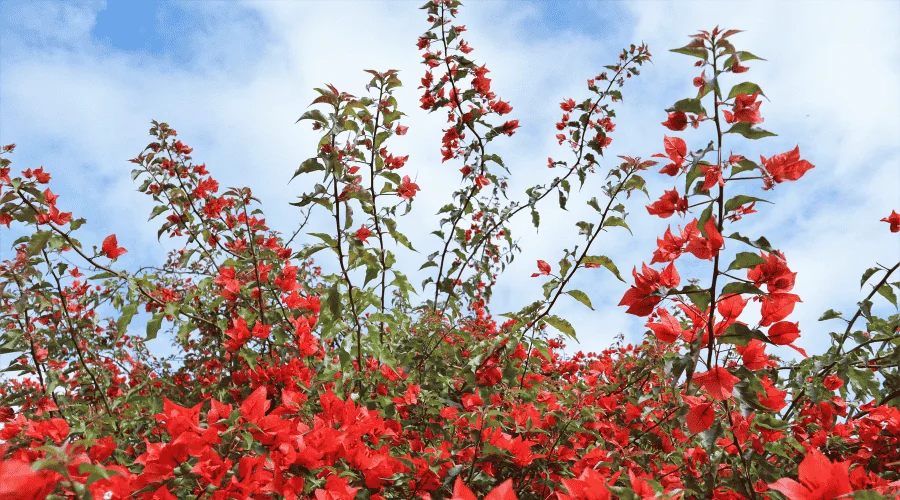
Native Florida Vines
Native vines are low-maintenance, attract local wildlife, and thrive naturally in our sandy soils and subtropical climate. These are the best first picks for eco-friendly Florida gardens.
–Crossvine (Bignonia capreolata)
- Why it works: Evergreen and tough, this vine bursts with trumpet-shaped orange-red flowers each spring and attracts hummingbirds.
- Care: Train on trellises or fences. Minimal pruning needed beyond shaping.
–Coral Honeysuckle (Lonicera sempervirens)
- Why it works: A native classic with tubular red blooms that draw hummingbirds all year.
- Care: Provide sturdy support and prune lightly after flowering.
–Passionflower (Passiflora incarnata or Passiflora suberosa)
- Why it works: Host plant for Gulf fritillary and zebra longwing butterflies. Its intricate flowers and edible fruit add garden intrigue.
- Care: Full sun, well-drained soil, and periodic pruning to manage spread.
–Native Clematis (Clematis crispa or C. reticulata)
- Why it works: Bell-shaped lavender or white flowers add soft color and texture.
- Care: Keep roots shaded and prune lightly after flowering.
–Climbing Aster (Symphyotrichum carolinianum)
- Why it works: A pollinator magnet native to wetlands and riverbanks, producing purple daisy-like blooms in fall.
- Care: Prefers moist soil and full to part sun. Great for natural areas or near ponds.
–Yellow Jessamine (Gelsemium sempervirens)
- Why it works: Fragrant yellow flowers brighten the landscape in late winter and early spring. Evergreen and excellent for privacy screens.
- Care: Plant in full sun to light shade; prune after blooming to shape. Note: mildly toxic if ingested — keep away from pets.
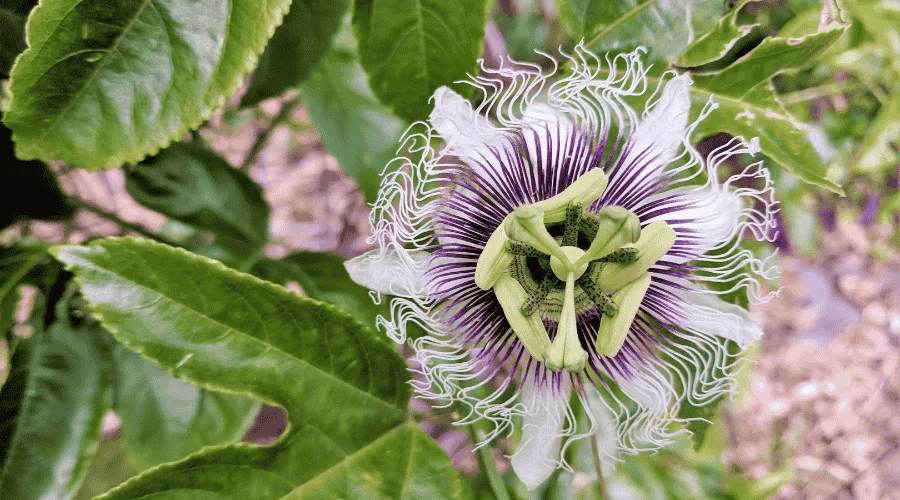
Florida-Friendly (Non-Native but Non-Invasive) Vines
These vines aren’t native but perform beautifully in Florida’s climate without causing ecological harm. Perfect for trellises, patio accents, or tropical displays.
–Confederate Jasmine (Trachelospermum jasminoides)
- Why it works: A reliable evergreen with star-shaped, fragrant white blooms.
- Care: Full sun to part shade; trim after flowering to keep tidy.
–Skyvine (Thunbergia grandiflora)
- Why it works: Tropical, fast-growing vine with cascading lavender-blue blooms. Great for large arbors or privacy walls.
- Care: Prune heavily in late winter; loves full sun.
–Bougainvillea (Bougainvillea spp.)
- Why it works: Brilliant bracts in pink, red, orange, or purple bring year-round tropical color.
- Care: Requires full sun and dry soil; prune after flowering to encourage new growth.
–Clitoria (Clitoria ternatea) — Butterfly Pea Vine
- Why it works: Produces vivid blue or white flowers, attracts butterflies, and works well in small spaces or containers.
- Care: Full sun and consistent watering; easy to train up trellises.
–Coral Vine (Antigonon leptopus)
- Why it works: Romantic clusters of pink flowers that attract bees and butterflies. Fast-growing and well-suited to sunny fences.
- Care: Prune back after flowering to control spread; drought-tolerant once established.
–Bleeding Heart Vine (Clerodendrum thomsoniae)
- Why it works: Unique red-and-white heart-shaped blooms; great for shade gardens and patios.
- Care: Part sun to bright shade; needs a trellis or fence for support and regular pruning after flowering.
–Mexican Flame Vine (Pseudogynoxys chenopodioides)
- Why it works: A cheerful orange-blooming vine that attracts pollinators year-round.
- Care: Full sun, average soil, and light pruning after flowering.
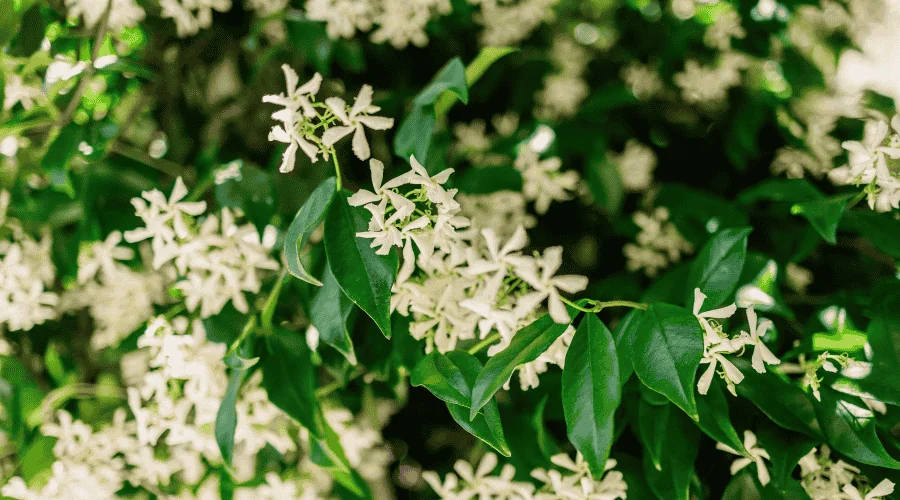
Invasive or Not Recommended Vines
These vines may look beautiful in catalogs, but are known escape artists in Florida landscapes. They outcompete native plants, damage structures, and can be almost impossible to remove once established.
–Air Potato (Dioscorea bulbifera)
- Problem: Grows several inches per day, spreading via aerial bulbils.
- Better Choice: Crossvine or Skyvine for similar lush coverage.
–Cat’s Claw Creeper (Dolichandra unguis-cati)
- Problem: Underground tubers make it nearly impossible to eradicate; it smothers trees and fences.
- Better Choice: Coral Honeysuckle or Confederate Jasmine.
-Japanese Honeysuckle (Lonicera japonica)
- Problem: Aggressive, evergreen vine that chokes out native vegetation.
- Better Choice: Lonicera sempervirens (Coral Honeysuckle).
–English Ivy (Hedera helix)
- Problem: Damages trees and structures, harbors pests, and resists control.
- Better Choice: Confederate Jasmine or Bougainvillea.
–Climbing Asparagus Fern (Asparagus africanus)
- Problem: Thorny, invasive, and spread by birds.
- Better Choice: Bleeding Heart Vine or Mexican Flame Vine for similar lushness.
–Skunkvine (Paederia foetida)
- Problem: Smelly, fast-growing vine that invades natural areas.
- Better Choice: Passionflower or Yellow Jessamine.
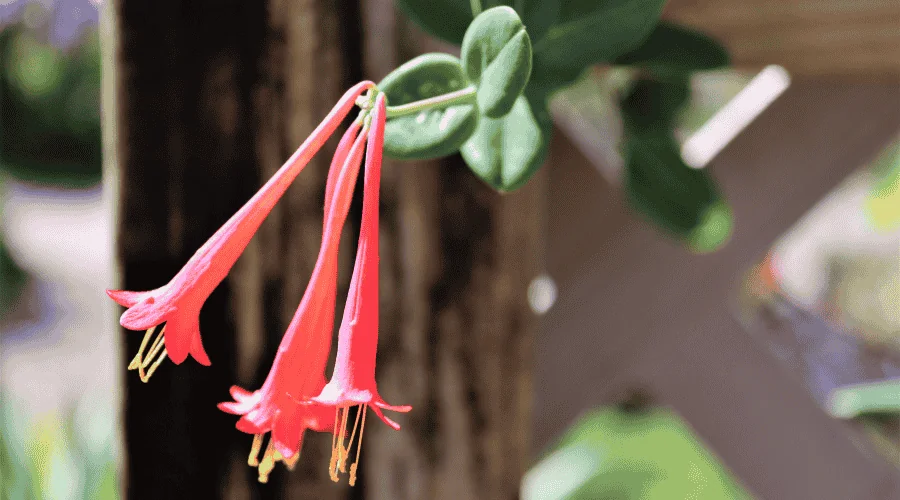
Vine Care Tips
- Support: Use a strong trellis, fence, or arbor that can bear mature weight.
- Water: Newly planted vines need consistent moisture. Once established, natives tolerate dry spells.
- Pruning: After flowering, trim to encourage fresh growth and keep tidy.
- Fertilizer: A slow-release, balanced fertilizer in spring promotes blooms without overgrowth.
- Mulch: A 2–3” mulch layer helps retain moisture and protect roots.
- Cold Snaps: Some tropical vines may die back in winter but regrow when temperatures rise.
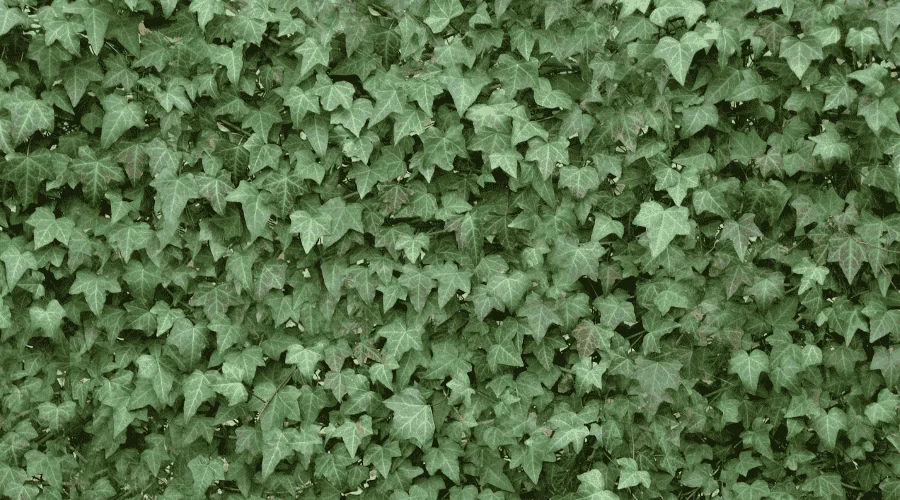
Vines can transform your Central Florida garden from flat to flourishing — providing color, privacy, and wildlife habitat. Start with natives for easy care and ecological benefits, add Florida-friendly tropicals for flair, and avoid invasive species that harm the environment.
With the right choices and a sturdy trellis, you’ll enjoy cascading blooms, fluttering pollinators, and green walls that thrive in every season.


